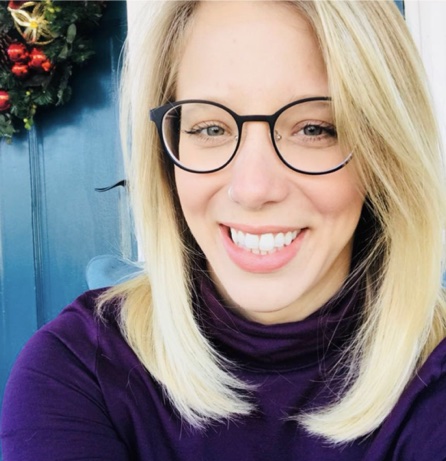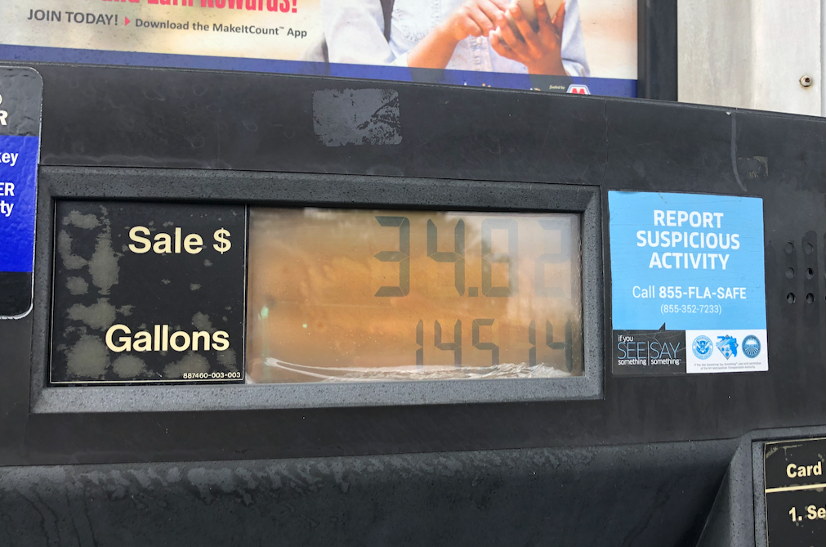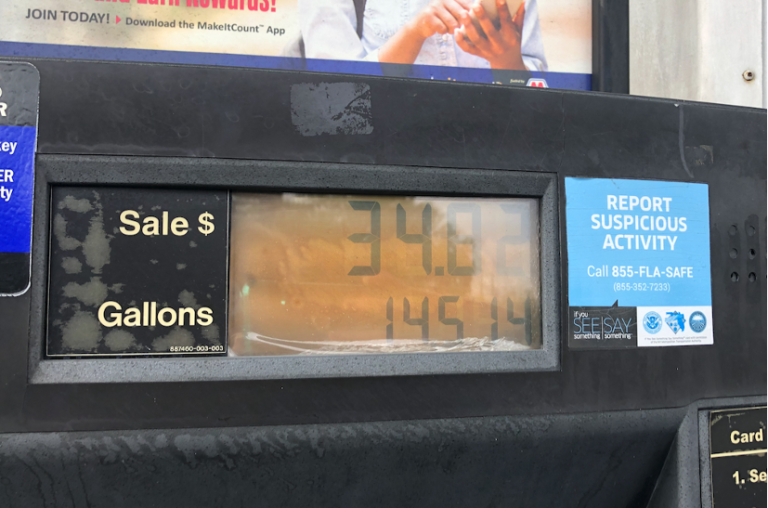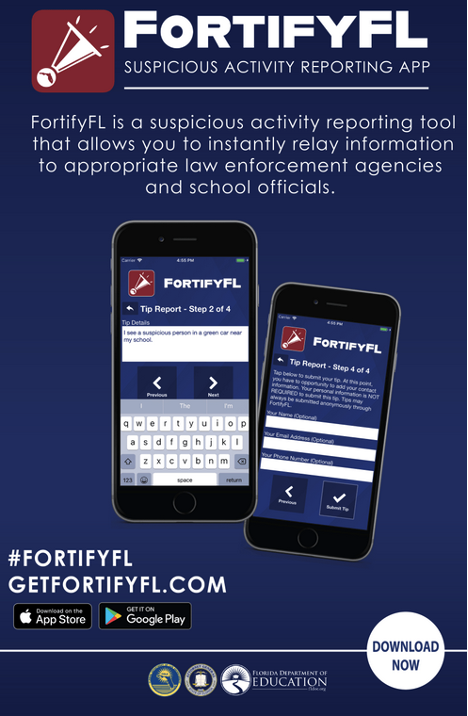By Courtney Canter
It’s a warm August day in southern Florida. The piercing sun is sitting high in the sky at 10am, beaming brightly without a cloud in sight. I’m standing in the middle of the courtyard at Bay High School, a large public high school in southeastern Florida educating just under two thousand students a year. I look up to take in the sun’s heat and notice how the bright blue sky paints a beautiful backdrop for the sprawling green leaves of the many queen palm trees that tower over the school’s courtyard. I wander around the courtyard while I wait for Mr. Wilson to meet me. Looking up and around me, I turn in circles as I take in three stories of concrete hallways and classroom doors that line the edges of the courtyard. Standing tall and open, like so many high schools in southern Florida, the walls are plastered with the signage one expects to see in a place like this: a call to join the school drama club adorns one wall while an announcement for volleyball tryouts begins to peel away from another. I’m reading the details of an SAT study group flyer as the first beads of sweat begin to drizzle down the side of my face. The undeniable heat and humidity can no longer be ignored, if they ever could be.
“There ain’t no ‘hard corner’ in here! They just put that there ’cause it was on some checklist. I guess it makes them feel like they done their job.”
Realizing mostly black attire was a poor choice for a full day of interviewing in south Florida, I squeeze into the small amount of shade offered by the roof overhang outside Mr. Wilson’s classroom door. Suddenly, I hear a voice call from a few meters away, “Mrs. Canter, I see you found my room just fine. Melting in the sun yet?” I reply, “I’m just glad it isn’t raining,” adding, “I didn’t bring an umbrella.” Mr. Wilson laughs, “you won’t make that mistake twice in south Florida. I can promise you that.” Mr. Wilson’s classroom faces the courtyard and as we enter, I immediately notice the wall of windows that offer a lovely view of the courtyard’s many palm trees. Bright beams of sun light shine across the classroom desks as I turn to him, stating, “Well this seems like a nice location to have a classroom.” He whips back, “It’s great. The cafeteria is just across the courtyard. The office is just on the north end and real easy access to the parking lot is on the south side. It’s prime real estate. That’s why I picked it.” It’s the kind of logic that one might expect a veteran teacher to use when eyeing a classroom move. “I waited and waited for the teacher who had it before me to retire so I could get in here. Good view and no stairs, Lord I was so happy when I moved in. Felt like I was on the way up.” Mr. Wilson continues, “but that was over 20 years ago. If I could do it again, I probably would have done it different.” A puzzled look comes over my face and he responds, “these windows are nice, but they sure ain’t gonna keep these kids safe. We ain’t got no chance if someone brings a gun in here.” Mr. Wilson points to a sign hanging on the wall behind his desk, referring to the other teachers with classrooms around the courtyard, “and that hard corner sign, makes us laugh. What a joke. There ain’t nowhere to hide in a room like this.” Identified by police as the best place to hide in the event of an active shooter, a hard corner sign hangs above the area of the classroom least visible to someone outside the room. Written into Florida school safety policy following the 2018 shooting at Marjory Stoneman Douglas High School in Parkland, schools are required to hang a hard corner sign above a police-identified hard corner in every K-12 classroom across the state. Using his hands and fingers to make air quotes, Mr. Wilson elates, “There ain’t no ‘hard corner’ in here! They just put that there ’cause it was on some checklist. I guess it makes them feel like they done their job.”
Preparedness and other forms of anticipatory action
Anticipatory action has been identified as a “paradoxical process whereby a future becomes cause and justification for some form of action in the here and now” (Anderson 2010, 778). A number of actions have been identified as anticipatory: preemption, precaution, and preparedness, among others, and a number of scholars have distinguished preparedness from other forms of “anticipatory action” that also work to intervene and control indeterminate futures (Anderson 2010; Lakoff 2008; Samimian-Darash and Rotem 2018). Unlike the anticipatory actions of preemption and precaution, which seek to stop or prevent indeterminate futures from coming into existence (Anderson 2010; Lakoff 2008), preparedness presumes uncertain futures will come to pass (Lakoff 2007). Preparedness, then, is comprised of those anticipatory actions whose “sphere of operation is a series of events after a precipitating event” (Anderson 2010, 791; Lakoff 2007). These actions do not work to alter or avert future events; rather, they work to manage their consequences (Anderson 2010, 2016; Collier and Lakoff 2008; Lakoff 2007, 2008; Masco 2014; Samimian-Darash and Rotem 2018). Preparedness, therefore, uniquely presumes the inevitability of an undesirable future and unlike other forms of anticipatory action, does not work to avert such catastrophe but, rather, manage its outcome.
"Preparedness is a familiar mode of attending to future threats in America—a security rationale whose roots extend back through decades of security culture traditions in the US."
Preparedness, then, is understood as a process of making the future present (Luhmann 1998). The future formed through a prism of past possibilities which necessitate particular forms of preparation in the present is an orientation that has been used to make sense of emergency preparedness efforts across a number of different contexts, such as natural disasters like Hurricane Katrina, biological threats like Swine Flu and its corresponding public health interventions, and domestic security efforts during the Cold War (Lakoff 2007, 2012; Luhmann 1998; Masco 2014). The logics of emergency preparedness have also been located in “imaginary engagements with the future” (Anderson 2017; Masco 2014, 14). These imaginary engagements have been located in affective engagements with notions of post-9/11 security governance (Armitage 2002; Lakoff 2007; Masco 2014, 2017) as well as through usage of practice drills and scenario enactments (Anderson 2010; De Goede 2008; Masco 2014; Samimian-Darash and Rotem 2018). As a key organizing principle of US security culture since the early twentieth century, preparedness has been widely recognized as a form of governance that reinforces the security state by affectively recruiting civilians to engage with imaginaries of state ruin (Adey, Anderson, and Graham 2015; Anderson 2016; De Goede 2008; Lakoff 2008; Masco 2014; Samimian-Darash and Rotem 2018). Emergencies, such as 9/11/2001, have been identified as particularly powerful moments of uncertainty that continue to open up new forms of governance (Adey, Anderson, and Graham 2015; Anderson and Adey 2012; Curley 2015; Kaufmann 2016; Samimian-Darash and Rotem 2018; Scarry 2011).
Recognized as not only a set of practices but also an assemblage of discourses and technologies (Adey and Anderson 2012), preparedness is commonly theorized as a form of uncertainty governance; understanding the history that underpins security logics not only enables us to historicize the present but also sheds light on the ways in which new and emerging security threats are being made into objects of present intervention. In his critical analysis of biosecurity and the history of global health preparedness, anthropologist Andrew Lakoff states that it is the ethnographer’s job to “explain how a given style of reasoning has emerged in a specific context and then extended into new arenas” (Lakoff 2017, 18).
Preparedness is a familiar mode of attending to future threats in America—a security rationale whose roots extend back through decades of security culture traditions in the US. As a form of uncertainty governance, preparedness provides a lens through which a greater understanding of the relationship between state-supported anticipatory logics or motivations and societal angst over collectively imagined future emergencies can emerge. School shooting preparedness in Florida complicates this relationship as the gap that exists between school safety policy as written and the lived reality of policy implementation gives rise to an unequal distribution of affects—an unshared sense of anticipation. Preparedness policies, like those enshrined in Florida school safety law, are imbued with a presumed sense of anticipation that often does not align with the on-the-ground reality where those policies are being implemented.
Changes, and challenges, to Florida school safety law
On February 14, 2018, a former student shot and killed seventeen people at Marjory Stoneman Douglas High School (MSDHS) in Parkland, Florida. Recognized in 2017 as the safest town in the state, Parkland soon became the focus of intense national scrutiny as Americans sought to understand the missteps that preceded such a tragedy—the cracks the gunman must have fallen through. While the tragedy that unfolded at MSDHS was sadly all too familiar, what came in its wake was not. Unlike the shootings at Columbine, Sandy Hook, Virginia Tech, and so many others, the Stoneman Douglas shooting prompted immediate legislative action, elaborated forms of uncertainty governance that despite public support, rarely come to fruition following a mass school shooting. Just three weeks after the Stoneman Douglas shooting, the state legislature passed Florida Senate Bill 7026 also known as the Marjory Stoneman Douglas High School Public Safety Act. As a nearly immediate and direct response to an act of mass gun violence, SB 7026 was unprecedented, raising the minimum age to purchase a firearm in the state of Florida from 18 to 21 and requiring a 3-day waiting period on all gun sales, among other gun control measures.
In addition, the bill implemented a number of sweeping changes to school safety policy, many of which are built on the presumption that with the right knowledge, or the right arrangement of techniques and technologies, acts of mass gun violence can be anticipated, and that anticipation can inform our efforts to prevent school shootings or at the very least, better prepare to manage their consequences. These changes included both the adoption of existing security logics, such as mandatory ID badges and an increased number of security cameras, as well as the creation of novel technologies. One of these novel technologies was an anonymous threat reporting system that would be available to all Florida residents, a mobile phone application known as Fortify Florida. Building on the logic which underpins the “See Something, Say Something” initiative that was born in the wake of 9/11, the Fortify Florida websites describes the app as “a suspicious activity reporting tool that allows you to instantly relay information to appropriate law enforcement agencies and school officials.” Combined with a number of other new school safety and preparedness measures such as the requirement that each school be completely enveloped in locked fencing and all school visitors must enter campuses through a single unlocked point of entry, attempts to engrain surveillance as a natural social condition have been met with a lagging uptake in the perceived need to live in such an anticipatory state. In fact, many principals and teachers have spoken about the challenges of getting high schoolers to take the initiatives seriously. For example, one high school has struggled with “misuses” of the Fortify Florida app, which was flooded with a barrage of complaints about the school’s lunch food options. Limited in their ability to push back on what they perceive as a threat to their health, students utilized the Fortify Florida app to voice their concerns, with complaints such as: “The lunch food is a threat to our health.” When discussing these challenges with the school’s principal, she stated, “I think we’ve got that problem under control; now students understand what the app is really meant for.”
Code red
In addition to promoting self-surveillance, SB 7026 works to physically engrain anticipation into Florida school community members through a dramatic increase in the number of mandatory active shooter exercises, also known as code red drills, from once a year to once a month. Code red drills, or lockdown drills as they are also commonly known, use emergency text systems to alert school community members of an immediate physical threat on their school campus. In response, teachers and students are supposed to lock classroom doors and huddle together under a hard corner symbol hanging in the room. Many classrooms also have emergency kits stocked with supplies meant to stop major bleeding, such as gauze and tourniquets. Despite many news reports that discuss the traumatizing nature of these drills, dozens of school community members have described the drills to me as desensitizing. In their experience, the more the drills are performed, the less effective they have become. Many school administrators have expressed concern about the frequency of the drills, with one high school principal noting that “students and teachers have become numb to it and don’t take it seriously anymore.” Another high school English teacher confirmed a similar notion, describing the monthly drills as “useless,” while a media studies teacher said participating in the drills felt “silly, so sometimes I don’t even stop teaching when the drill goes off.”
In Mr. Wilson’s classroom, the hard corner sign hangs on the wall behind his desk. While the wall behind Mr. Wilsons desk is concrete, it sits opposite to a wall made nearly entirely of windows. The hard corner serves not only as a marker of the “safest” location in a classroom but is also the gathering spot for students and teachers during monthly code red drills. Prior to 2018, schools conducted code red drills once or twice a year. In the wake of the 2018 MSDHS shooting, code red drills are now monthly, as required by law. For Mr. Wilson, the hard corner and code red drill policies lack the anticipation needed to address the vulnerability his classroom faces if ever presented with an active shooter. In his words, “Once a month, we all crowd under that hard corner sign and try not to think about how dumb it is. Like we can’t see everything happening outside those windows and they can’t see us all in here sitting on the floor.” When I ask Mr. Wilson if his student’s take the drills seriously, he begins to laugh, stating, “Lord no. They just on their phones. We do it so much, I’m not surprised. Ask a bunch of teenagers to do something every month they know will never save their life and you tell me how seriously they take it. I don’t blame them. We’re sitting ducks in here. And when we do those drills, we can feel it.”
However, Mr. Wilson’s perception of a shared sense of vulnerability was hard to find when I spoke with students and watched them participate in code red drills. When I asked Eduardo, a high school senior, what emotions he experienced while participating in the drills he replied: “One time the drill was extra long, usually its only five minutes but it was like twenty minutes and my phone died. I was so bored. I think I fell asleep.” Kayla, a sophomore, stated that she was happy the drill went off during her pre-calculus class because the teacher is one of the few instructors who doesn’t allow cell phone use in their classroom. The drill gave Kayla a chance to text her friends who were planning a hangout after school, “I don’t have a car so I really needed a ride that day so it was like perfect timing,” ironically stating that the drill “literally saved my life that day, I would have been screwed without a ride.”
Sunshine and dark clouds
While some community members wish students, and even teachers, would take the drills more seriously, some like Mr. Wilson at least partially recognize students’ response to code drills not as one of apathy but, rather, a distancing of oneself from reality. The sense of urgency and anticipation these drills hope to impart come up against harsh realities once they hit school grounds. Students repurpose security technologies, using them to address threats they perceive as imminent: an anonymous threat reporting tool is an opportunity to voice concern over a lack of nutritious food options; a code red drill provides time to text friends and secure a ride home from school. While administrators may frame students as engaging in youthful frivolity, perhaps we might consider their position as one of youthful resistance. The lagging uptake in anticipation may serve as affective protection against the realities of repetitive preparedness practices that do little to acknowledge the everyday vulnerabilities that blanket policies cannot address, such as a wall of classroom windows with nowhere to hide. Perhaps texting or checking Instagram and Snapchat are a welcomed reprieve from the realities of one’s own demise and the monthly physical reminder of the inability to defend yourself against a gunman.
Back at Bay High School, Mr. Wilson and I are wrapping up our discussion of school safety and the heavy cloud that continues to weigh over the state’s school safety policies since the 2018 shooting at MSDHS. I look over my shoulder again at the wall of windows next to Mr. Wilson’s classroom door. I take in the beautiful rays of light offered by the windows, and the difficulty they present, when I am reminded of Florida’s nickname: “The Sunshine State.” Suddenly a bell rings and I can tell from the look on Mr. Wilson’s face that our time has come to an end. I pack up my things and shake his hand as he opens his classroom door for me to leave. Like opening the door of a hot oven, the heat hits me once again. It’s a stark contrast to the chilly but comfortable classroom we’ve been enjoying. I thank Mr. Wilson for meeting with me and start to make my way across the courtyard once again. I stop and look up one last time, taking in the three stories of concrete that encase the courtyard palms as they reach for the sun. The sky seems darker than before. Just then, a rumble of thunder crosses the sky. Here comes the rain.

Courtney Canter
Courtney Canter is a PhD candidate in the Department of Anthropology at the University of North Carolina and a medical student with UNC School of Medicine.
Bio
Courtney is broadly interested in the impact of gun violence, and specifically mass shootings, on the lives of individuals and the institutions to which they are a part.
Her master’s thesis “Present Future, Present Past: Mass Casualty Incident Preparedness in the Research Triangle Region of North Carolina” looked at the impact of mass casualty events, including mass shootings, on hospital and emergency management employees and their affiliated institutions in North Carolina. Her dissertation research is focused on the impact of school shootings and school safety policy on school community members across southern Florida.
Courtney moved to southern Florida in January 2021, and spent the last three years conducting ethnographic field work alongside K-12 school faculty, staff, students and parents in Broward and Miami-Dade County. With more than 600,000 students, Miami-Dade and Broward County are the fourth and fifth largest school districts in the country, respectively.
Currently, her research is focused on better understanding the lingering impacts of the 2018 school shooting at Marjory Stoneman Douglas High School in Parkland, Florida on school community members as they work to navigate an evolving system of state-mandated school safety policies and expectations.
References Cited
Adey, Peter, Ben Anderson and Stephen Graham. 2015. “Introduction: Governing Emergencies: Beyond Exceptionality.” Theory, Culture & Society 32(2): 3–17.
Anderson, Ben. 2010. “Preemption, precaution, preparedness: Anticipatory action and future geographies.” Progress in Human Geography 34(6): 777–798.
Anderson, Ben. 2016. “Governing emergencies: The politics of delay and the logic of response.” Transactions of the Institute of British Geographers 41: 14–26.
Anderson, Ben. 2017. “Emergency futures: Exception, urgency, interval, hope.” The Sociological Review 65(3): 463-477.
Anderson, Ben and Peter Adey. 2012. “Governing events and life: ‘Emergency’ in UK civil contingencies.” Political Geography 31: 24–33.
Armitage, John. 2002. “State of Emergency: An introduction.” Theory, Culture & Society 19(4): 27–38.
Collier, Stephen J and Andrew Lakoff. 2008. “Distributed preparedness: The spatial logic of domestic security in the United States.” Environment and Planning D: Society and Space 26(1): 7–28.
Curley, Tyler M. 2015. “Models of Emergency Statebuilding in the United States.” Perspectives on Politics 13(3):697–713.
De Goede, Marieke. 2008. “The Politics of Preemption and the War on Terror in Europe.” European Journal of International Relations 14(1):161–185.
Kaufmann, Mareile. 2016. “Exercising Emergencies: Resilience, Affect and Acting out Security.” Security Dialogue 47(2):99–116.
Lakoff, Andrew. 2007. “Preparing for the Next Emergency.” Public Culture 19(2): 247-271.
Lakoff, Andrew. 2008. “The Generic Biothreat, or, How We Became Unprepared.” Cultural Anthropology 23 (3): 399–428.
Lakoff, Andrew. 2012. “The Risks of Preparedness: Mutant Bird Flu.” Public Culture 24(3,68): 457–464.
Luhmann, Niklas. 1998. Observations on Modernity. Stanford, California: Stanford University Press.
Masco, Joseph. 2014. The Theater of Operations: National Security Affect from the Cold War to the War on Terror. Durham, North Carolina: Duke University Press.
Masco, Joseph. 2017. “The Crisis in Crisis.” Current Anthropology 58(15): S65-S76.
Samimian-Darash, Limor and Nir Rotem. 2018. “From Crisis to Emergency: The Shifting Logic of Preparedness.” Ethnos 1-17.
Scarry, Elaine. 2011. Thinking in an Emergency. Norton Global Ethics Series. New York: W. W. Norton & Company.
You may republish this article, either online and/or in print, under the Creative Commons CC BY-ND 4.0 license. We ask that you follow these simple guidelines to comply with the requirements of the license.
In short, you may not make edits beyond minor stylistic changes, and you must credit the author and note that the article was originally published on Home/Field.


